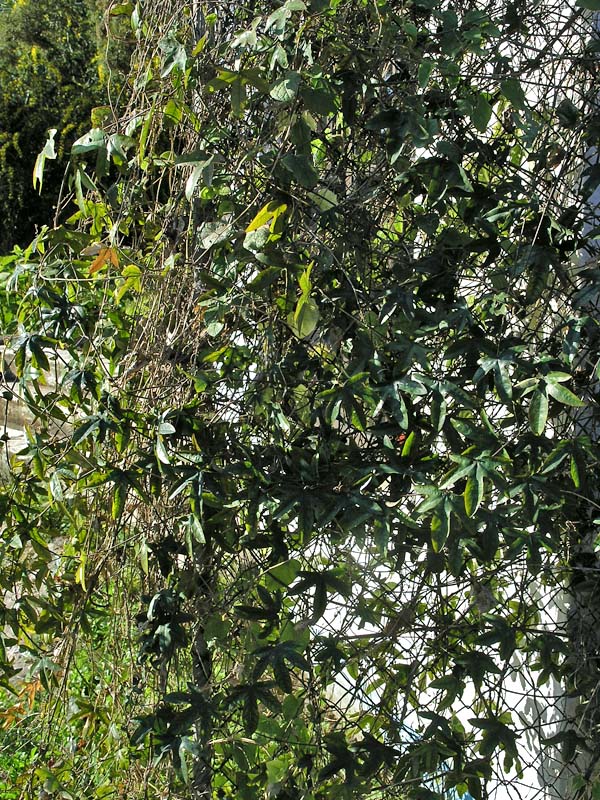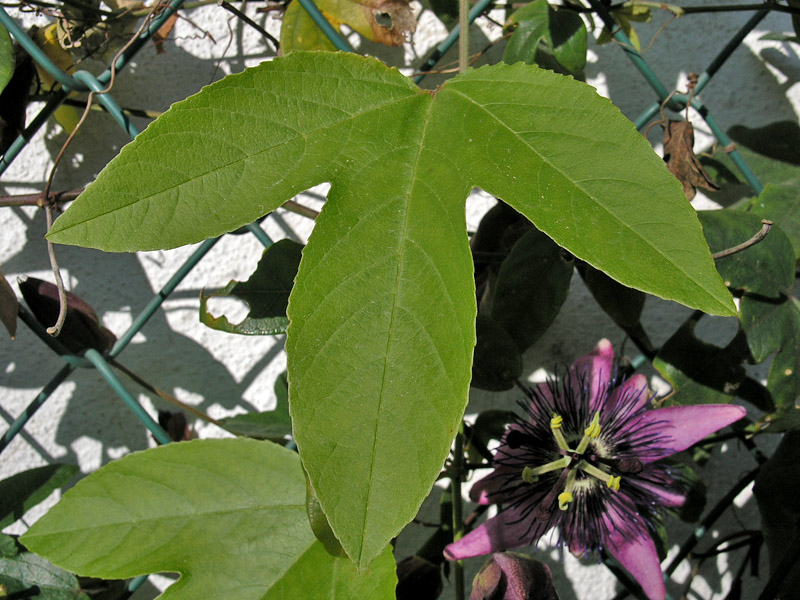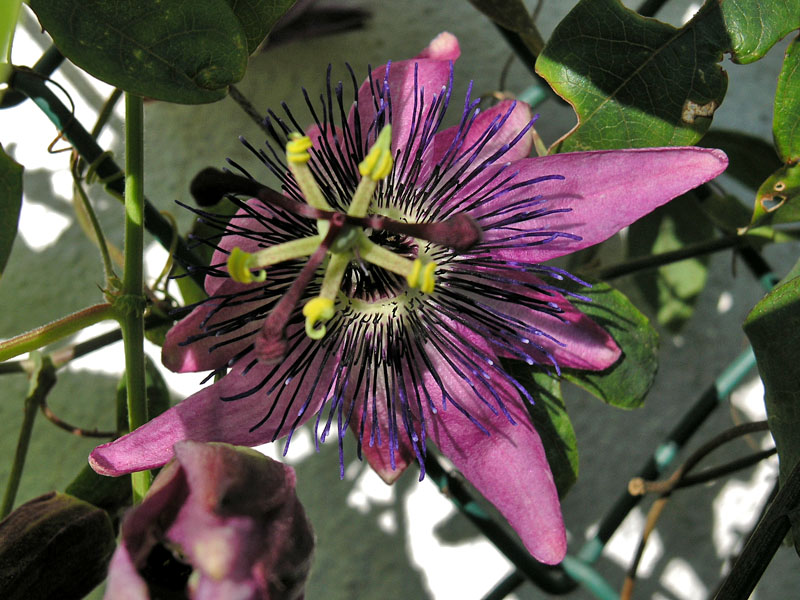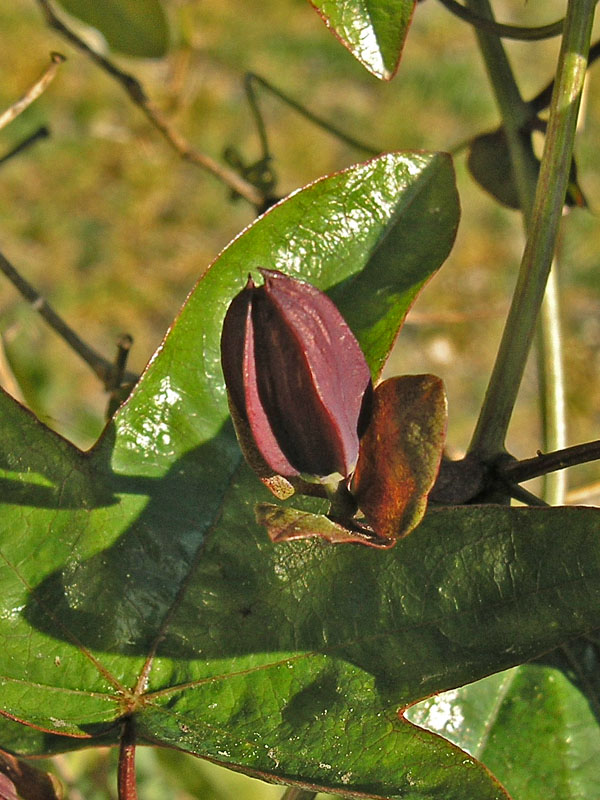
Tropicals, Woody > Passiflora > Passiflora caerulea > Passiflora caerulea
Passiflora caerulea
Blue Passion Flower
Origin: South America.
| Family |
| Passifloraceae |
| Genus |
| Passiflora |
| Species |
| caerulea |
| Category |
| Tropicals, Woody |
| Type |
| Vine |
| Pronunciation |
| USDA Hardiness Zone |
| 8b - 9a |
| Canadian Hardiness Zone |
| 8a |
| RHS Hardiness Zone |
| H4 |
| Temperature (°C) |
| -9 - (-4) |
| Temperature (°F) |
| 15 - 25 |
| Height |
| 8 - 12 m |
| Spread |
| 2.5 - 4 m |
Photographs
Description and Growing Information
Flowering Period
| General Description |
| Passiflora caerulea or Blue Passion Flower is a robust, climbing, deciduous or semi-evergreen vine with thick, deeply lobed leaves and exquisitely detailed, showy blooms. |
| Cultivation |
| Grow in a sheltered location, in full sun to part shade, moist, well-drained soil. In less temperate climates, grow in containers and take inside over winter. |
| Growth |
| Fast |
| Pests |
| Possible problems include mealybugs, red spider mite, scale and glasshouse whitefly. |
| Leaf Description |
| Dark green with deep, finger-like lobes. |
| Flower Description |
| Showy, up to 8 cm in diameter, 5 white petals alternate with 5 sepals of the same colour (they all look the same- if closely inspected, you will see a stiff bristle at each sepal tip, called an 'awn'), rays of coronal filaments are variegated purple, white and blue, 5 large stamens with anthers perpendicular / hinged to filaments, stigma is 3-pronged. Wow! |
| Fruit Description |
| Ovoid, orange, containing red bean-shaped seeds. |




